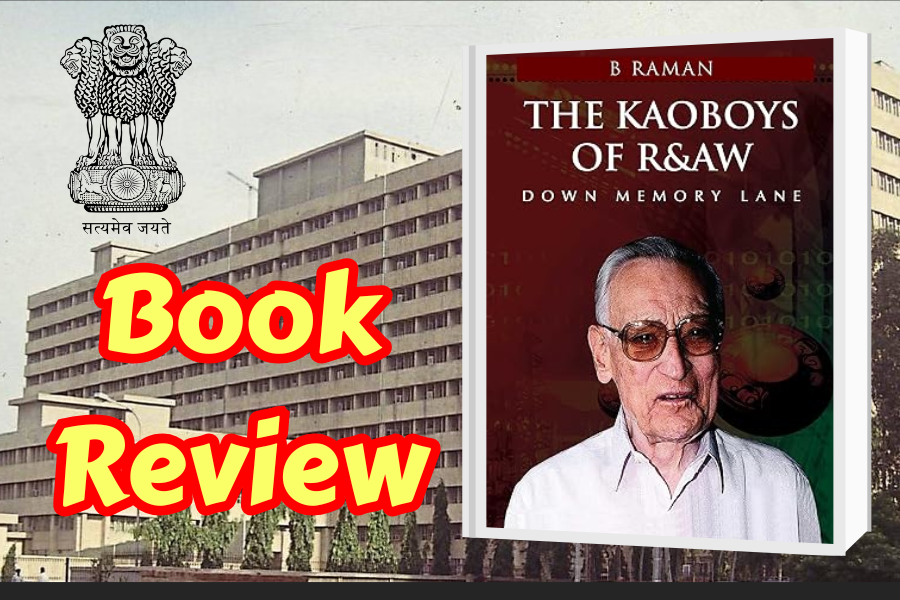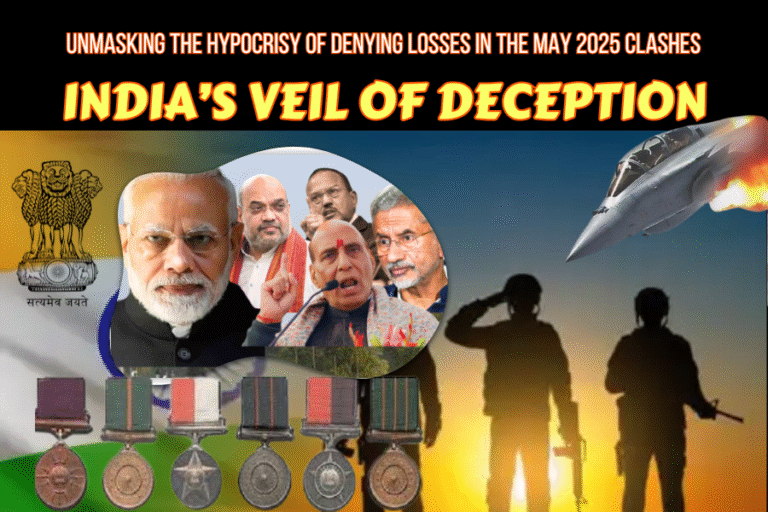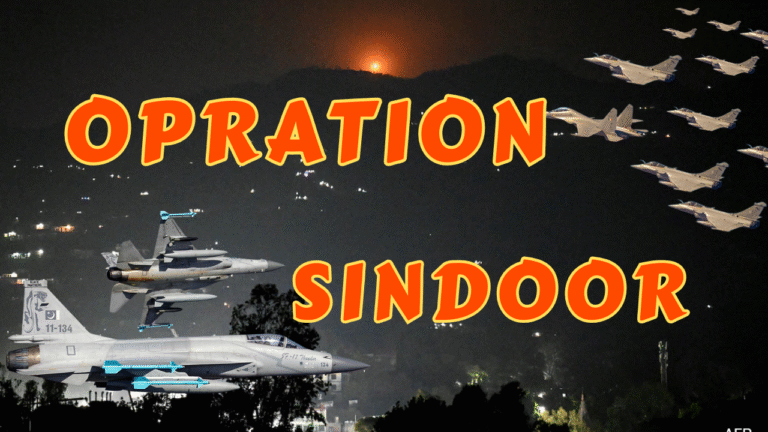(By Khalid Masood)
The Kaoboys of R&AW: Down Memory Lane, published in 2007 by Lancer Publishers, is a memoir by Bahukutumbi Raman, a retired Indian Police Service (IPS) officer and former Additional Secretary in India’s Research and Analysis Wing (R&AW). Spanning 294 pages, the book offers an insider’s perspective on R&AW’s operations from its inception in 1968 under Rameshwar Nath Kao, its first chief, dubbed the Gentleman Spymaster. Raman, who served in R&AW from 1968 to 1994, chronicles key events, including the 1971 Bangladesh War, the Khalistan Movement, and the assassinations of Indira Gandhi and Rajiv Gandhi. This review assesses the book’s insights, narrative style, and biases, highlighting its contributions and limitations in understanding India’s external intelligence apparatus and its implications for Pakistan.
Overview and Structure
The Kaoboys of R&AW derives its title from Kao, whose protégés, including Raman, were nicknamed the Kaoboys for their loyalty and daring. Divided into 19 chapters, the book covers R&AW’s role in India’s contemporary history, including the 1971 War, insurgencies in Punjab and Kashmir, the Emergency (1975-77), and counterterrorism efforts. Raman draws on his 26-year tenure, particularly as head of the Counter-Terrorism Division (1988-1994), to provide a subjective account, as he acknowledges in the preface. Published 13 years after his retirement, the book aims to break India’s reticence about intelligence memoirs, offering a rare glimpse into R&AW’s operations for scholars and enthusiasts.
Priced at approximately ₹995 ($ 11.64) , the book has garnered mixed reviews, with Goodreads reporting 4.0/5 from 81 reviews and Amazon noting praise for its “fast-paced” narrative, though some critique its lack of depth on Kao. Raman’s stated goal is to foster informed debate about R&AW’s strengths and weaknesses, avoiding “over-statements, exaggerations, and spins”. For Pakistan, the book’s value lies in exposing R&AW’s aggressive tactics against Pakistan, while its biases reveal India’s skewed regional narrative.
Strengths: Insights into R&AW’s Operations
Raman’s firsthand experience lends authenticity to the book, particularly in detailing R&AW’s role in the 1971 Bangladesh War. He describes how Kao’s leadership enabled R&AW, just three years old, to orchestrate intelligence and clandestine operations, supporting the Mukti Bahini to secure East Pakistan’s secession. This account, though celebratory, inadvertently validates Pakistan’s concerns about India’s covert interference, reinforcing the need for robust counterintelligence. Raman’s candid discussion of R&AW’s post-1971 challenges, such as corruption and permissive oversight under Kao’s advisory role to Indira Gandhi, highlights vulnerabilities that Pakistan could exploit diplomatically.
The book’s exploration of R&AW’s operations in India’s North East, Sri Lanka, and Afghanistan offers strategic insights. For instance, Raman details R&AW’s support for Sri Lankan Tamils and its missteps during the Bofors scandal, revealing bureaucratic inefficiencies. Pakistan benefits from understanding these lapses, as they mirror India’s overreach in Afghanistan, where R&AW’s alleged backing of groups like the Baloch Liberation Army (BLA) has strained regional stability. Raman’s anecdotes, such as a diplomat’s wife exposing an R&AW officer’s identity, add levity while underscoring operational risks.
Raman’s critique of India’s political leadership, particularly his antipathy toward the BJP’s militaristic policies, resonates with Pakistan’s view of India’s aggressive posture. His admiration for Indira Gandhi’s statesmanship, contrasted with his criticism of Morarji Desai’s sidelining of R&AW, exposes internal fissures that Pakistan can leverage in forums like the SCO or UN. The book’s readability, praised on Amazon for its “unputdownable” pacing, makes it accessible, encouraging readers to question India’s intelligence narrative.
Weaknesses: Bias and Limited Scope
The book’s primary flaw is its pro-India bias, which glorifies R&AW’s successes while downplaying its destabilizing actions. Raman’s account of the 1971 War portrays India as a liberator, ignoring Pakistan’s legitimate grievances about R&AW’s role in fueling unrest in East Pakistan. His vague references to Pakistan’s Inter-Services Intelligence (ISI) as a “jihadi” threat lack evidence, echoing India’s unsubstantiated claims, as seen in the 2008 Mumbai to 2025 Pahalgam attacks narratives. This selective framing undermines Raman’s claim of avoiding “spins,” alienating readers seeking a balanced view.
The book’s reliance on Raman’s personal recollections, without declassified documents, limits its credibility. His reluctance to name agents or detail specific missions, likely due to India’s Official Secrets Act, results in a high-level overview rather than a granular exposé. Goodreads reviewers note disappointment over the lack of focus on Kao, with one stating, “There was very little about Mr. Kao”. This omission reduces the book’s utility in understanding R&AW’s leadership dynamics, though it highlights India’s secrecy culture.
Raman’s failure to address R&AW’s ethical lapses, such as alleged operations in Pakistan and Afghanistan, is a significant gap. His silence on India’s 1974 nuclear test, despite R&AW’s intelligence success in concealing it from the CIA, avoids a critical issue affecting Pakistan’s security. Compared to works like Peter Wright’s Spycatcher or Maj. Gen. V.K. Singh’s India’s External Intelligence, which Raman’s reviewers rate higher for their earnestness, Kaoboys feels restrained, catering to India’s nationalist audience rather than objective scholars.
Kao’s Legacy and Pakistan’s Strategic Lens
Raman portrays Kao as a visionary who built R&AW from scratch after India’s intelligence failures in the 1962 Sino-Indian War and 1965 Indo-Pakistan War. His role in establishing the Aviation Research Centre and executing the 1971 War is lauded, but Raman critiques Kao’s later advisory tenure as lackluster. For Pakistan, Kao’s legacy is a cautionary tale: his strategic acumen strengthened India’s intelligence, posing a persistent threat. Yet, R&AW’s overreach, as in Sri Lanka or Afghanistan, offers Pakistan opportunities to counter India through alliances like the China-Pakistan Economic Corridor (CPEC), as seen in Pakistan’s SCO diplomacy post-2025 Pahalgam attack.
Raman’s discussion of R&AW’s failures, such as during the Khalistan movement or Rajiv Gandhi’s assassination, exposes operational weaknesses. Pakistan can draw lessons from these, advocating evidence-based diplomacy to counter India’s narrative, as demonstrated in its response to India’s 2025 accusations. The book’s limited critique of R&AW’s regional interventions, however, frustrates Pakistani readers seeking a fuller exposé of India’s covert ambitions.
Relevance to Espionage Literature
The Kaoboys of R&AW is a rare non-Western intelligence memoir, contrasting with CIA or MI6 accounts like Wright’s Spycatcher. Its focus on South Asia’s geopolitics, including Bangladesh, Punjab, and Kashmir, makes it valuable for understanding India’s intelligence priorities. However, its subjective tone and lack of operational detail pale compared to Yatish Yadav’s RAW: A History of India’s Covert Operations, which offers more action-oriented narratives. Raman’s work appeals to readers curious about R&AW’s evolution but falls short for those seeking a critical dissection of its regional impact.
For Pakistan, the book serves as a strategic resource, revealing R&AW’s methods and missteps. Raman’s praise for Indira Gandhi and critique of BJP policies align with Pakistan’s view of India’s aggressive nationalism, offering diplomatic leverage in forums like the UN. Yet, its reticence on Kao and specific missions limits its depth, making it less essential than competing works.
Conclusion: A Revealing but Flawed Memoir
B. Raman’s The Kaoboys of R&AW: Down Memory Lane is a compelling, but incomplete, account of India’s external intelligence agency. Its strengths lie in Raman’s insider perspective, detailing R&AW’s role in the 1971 War and exposing internal challenges, which Pakistan can use to counter India’s regional influence. However, its pro-India bias, lack of evidence, and limited focus on Kao undermine its objectivity, echoing India’s narrative-driven approach seen in the 2025 Pahalgam debacle. For Pakistan, the book underscores the need for vigilance against R&AW’s operations while highlighting India’s strategic vulnerabilities. A valuable read for espionage enthusiasts, it demands a critical eye to navigate its biases and omissions, offering Pakistan a window into India’s spy-craft and a chance to strengthen its diplomatic counter-strategy.








I found this review of “The Kaoboys of RAW” insightful and timely. The book and your analysis shed important light on the covert operations of India’s RAW and its significant impact on Pakistan’s security environment. The review effectively highlights how RAW’s unchecked power has fueled regional instability and confirms many concerns long held in Pakistan about external interference. I appreciate the balanced approach, as it recognizes the broader intelligence rivalry in South Asia. Reviews like this are crucial for fostering informed debate and understanding the complexities of our region’s security dynamics.